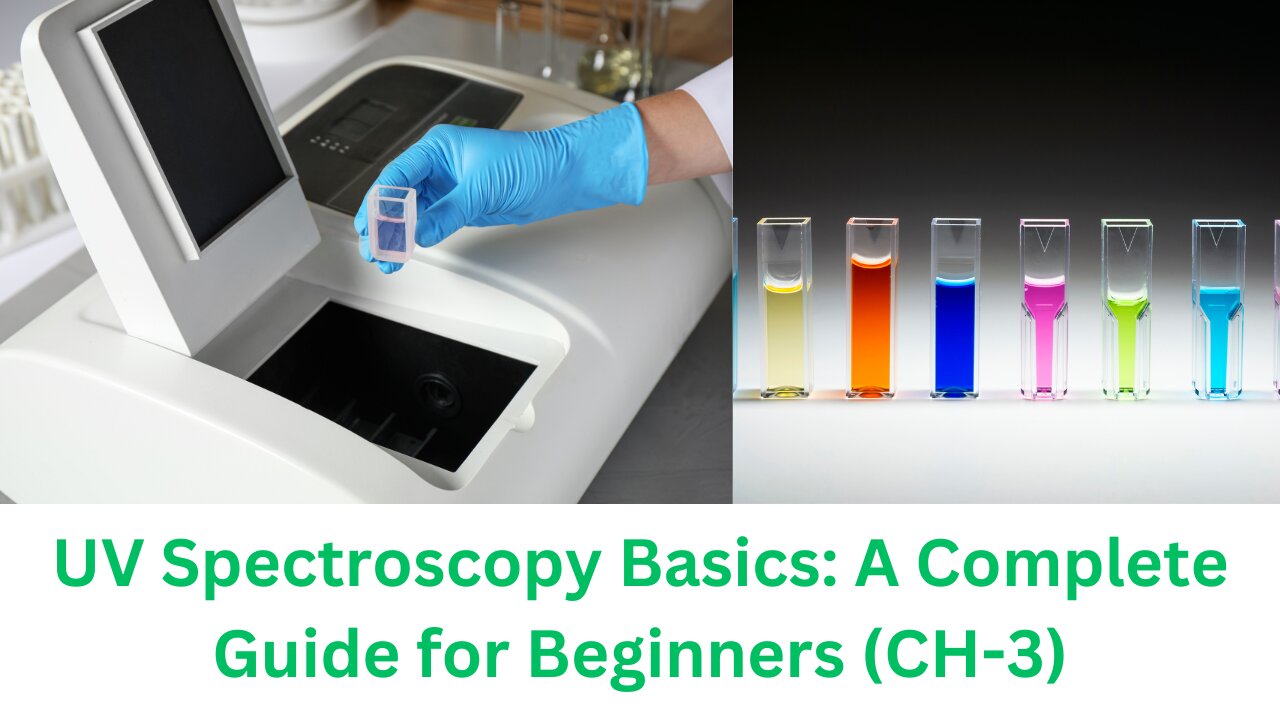Premium Only Content

UV spectroscopy (Chapter 3)
UV Spectroscopy (Ultraviolet Spectroscopy) is an analytical technique used to measure the absorbance or transmittance of UV light by a substance. It operates within the UV region of the electromagnetic spectrum, specifically between 200 and 400 nanometers. UV spectroscopy is widely used in chemistry, biology, and environmental sciences due to its ability to provide valuable information about the molecular structure, concentration, and behavior of different substances.
Key Principles of UV Spectroscopy
Absorption of UV Light: Molecules absorb UV light at specific wavelengths, causing electrons to transition from a ground state to an excited state. The specific wavelengths and intensities of absorbed light depend on the electronic structure of the molecule, particularly the types of bonds and functional groups present.
Electronic Transitions: UV spectroscopy primarily involves electronic transitions, such as π to π*, n to π*, and σ to σ* transitions. These transitions occur in various types of chemical bonds, such as double bonds or lone pairs, and are useful in identifying unsaturated compounds or those with aromatic rings.
Beer-Lambert Law: UV spectroscopy often uses the Beer-Lambert Law to determine the concentration of an analyte in a solution. According to this law, the absorbance of a substance is directly proportional to its concentration and the path length of the UV light through the sample. This makes UV spectroscopy an effective tool for quantitative analysis.
Applications of UV Spectroscopy
Identifying Compounds: UV spectroscopy is valuable in identifying organic compounds with conjugated systems, such as aromatic rings, which have distinct absorption patterns.
Quantitative Analysis: It is used to determine the concentration of compounds in a solution, especially in pharmaceuticals, biochemistry, and environmental monitoring.
Quality Control and Purity Testing: UV spectroscopy helps assess the purity of chemical compounds and detect contaminants, making it essential in industries like pharmaceuticals and food production.
Studying Reaction Kinetics: Researchers use UV spectroscopy to monitor reaction rates and study kinetic behavior by observing changes in absorbance over time.
Advantages of UV Spectroscopy
Non-Destructive: UV spectroscopy is a non-destructive method, meaning the sample remains intact after analysis.
Quick and Simple: It provides rapid results and requires minimal sample preparation.
High Sensitivity: UV spectroscopy is highly sensitive and can detect even small concentrations of analytes.
In summary, UV spectroscopy is a versatile, fast, and effective tool for identifying and quantifying compounds, offering a deep insight into molecular structures and behaviors across diverse scientific fields.
-
 LIVE
LIVE
SpartakusLIVE
1 hour agoHUGE NEW UPDATE - Aim Assist NERF, New META, New MOVEMENT || #1 King of Content
124 watching -
 LIVE
LIVE
Nikko Ortiz
1 hour agoVirtual Reality Milsim... | Rumble LIVE
102 watching -
 1:00:48
1:00:48
BonginoReport
3 hours agoFBI Nabs Jan 6 Pipe Bomber Suspect After 5 Years - Nightly Scroll w/ Hayley Caronia (Ep.190)
117K40 -
 LIVE
LIVE
Sgt Wilky Plays
2 hours agoSweating the Ranked Plays
79 watching -
 LIVE
LIVE
ZWOGs
7 hours ago🔴LIVE IN 1440p! - More PvP and Trials before wipe - ARC Raiders! - Come Hang Out!
72 watching -
 LIVE
LIVE
EvilT4000
38 minutes agoStarting with Apex and then moving on to Season 1 of Warzone? What? 😱 Should be really fun!
52 watching -
 22:27
22:27
The White House
6 hours agoPresident Trump and The First Lady Participate in the National Christmas Tree Lighting
7.36K18 -
 LIVE
LIVE
OFFICIAL Jovan Hutton Pulitzer Rumble
2 hours agoThey Are Weaponizing The Existing Cracks In America
82 watching -
 LIVE
LIVE
LFA TV
22 hours agoLIVE & BREAKING NEWS! | THURSDAY 12/04/25
540 watching -
 1:40:10
1:40:10
Kim Iversen
4 hours agoThe UK Has Covered Up THOUSANDS Of Grooming Gang Rapes | IDF Soldiers Are Killing Themselves At Record Levels
80.1K65